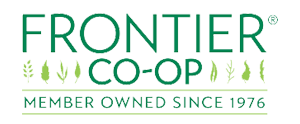Defining the Paleo Diet
You’ve likely heard of The Paleo Diet®, Paleolithic nutrition, or the hunter-gatherer diet to describe a way of eating that mimics the diet of our ancestral past. Unfortunately, there’s a lot of misinformation about the diet, but when you get down to the basics, it’s just eating a lot of vegetables, fruits, lean meats, fish, eggs and some nuts and seeds – what you find at your local farmer’s market.
The basic argument for following this way of eating is that, for most of human history, it is how we ate, and it subsequently shaped our genetics.
This is particularly true in terms of how we, as humans, respond to the foods we eat, to the prevention of disease, and the vitality of our species. While there have been massive changes in the food supply—starting with the agricultural revolution 10,000 years ago, then, the advent of dairy farming 5,000 years ago, and the more recent industrial revolution—our genetic makeup has not kept pace.
Humans do adapt to changes. For example, the genetic mutation that led to the development of adult lactase persistence (ALP) – allowing some of us to digest lactose in milk into adulthood – took place very recently, from an evolutionary standpoint. But when looked at in terms of human generations, we actually adapt very slowly. This can result in an incongruence between our physiology and our environment. That is the case with the typical modern diet in the Western world. Over 70 percent of the foods we eat were introduced since our last major evolutionary change and we simply haven’t caught up.
There are many nutritional advantages to following a more ancestral nutrient-rich diet comprised mainly of fresh fruits, fresh vegetables, fish, shellfish, grass produced meats and organ meats, free-range poultry, free-range eggs, nuts, and certain healthful oils.
The Paleo Diet avoids or eliminates processed foods containing refined sugars, refined grains, refined vegetable oils, trans fatty acids, salt, and added chemicals. Fresh fruits and fresh vegetables, good sources of healthier carbohydrates, are consumed ad libitum in lieu of refined sugars, refined grains, and processed foods. As a result, The Paleo Diet is a low glycemic load diet which promotes normalization of blood glucose, insulin, and helps prevent the metabolic syndrome.
In addition, the foods that constitute a modern Paleo Diet contain few problematic dietary anti-nutrients such as lectins, which can lead to a host of health concerns, including autoimmune diseases.
Ultimately, providing our physiology with foods that match our genetically determined nutritional requirements is why The Paleo Diet will provide you with long lasting health.
Paleo Diet Benefits
There are many benefits to eating the way we were designed to eat. However, perhaps the best way to summarize it is to discuss the consequences of eating a Western diet. This highly processed diet has been shown to lead to low-grade inflammation, which is at the heart of most chronic illness.
The Paleo Diet®, also called an “evolutionary diet,” is centered around the idea that for optimal health we should eat foods that are as close to what our ancestors ate during the time of human evolution. The benefits of eating the diet our bodies were designed to eat are almost too numerous to list. However, this interview with Dr. Loren Cordain, the founder of the diet, is a good start.
Any of us who own a car understand the importance of using the right fuel and motor oil for our vehicles—the consequences of putting diesel fuel in a gasoline-powered car can be catastrophic. The same goes for putting the wrong foods in our bodies. Perhaps the best way to show the benefits of the Paleo Diet is to show the consequences of not eating this evolutionary diet.
Simply put, the typical Western diet is an inflammatory diet. That means it causes chronic and inappropriate low-grade inflammation as well as intestinal permeability which puts a strain on the immune system. This inappropriate inflammation should not be underestimated. As we continue to better understand the mechanisms behind most chronic illness, the one commonality found by researchers is that they are all preceded by inflammation.
To give a few examples, almost every autoimmune disease is associated with an inappropriate rise in the concentrations of TH17—a highly inflammatory immune cell. Likewise, we now know that atherosclerosis is caused by the build-up of a particular type of inflammatory immune cell called macrophages. Even cancer has been linked to inflammation, as well as to several dietary attributes of a Western diet, such as the high consumption of processed sugar and salt.
The Western diet is loaded with simple sugars, which have been linked to a variety of inflammatory conditions including heart disease and neurological disorders. Overconsumption of sugar also results in a high glycemic load which can lead to insulin resistance and diabetes. A Paleo Diet is a low glycemic load diet that significantly reduces simple sugars.
Several of the most beneficial aspects of the Paleo Diet are unknown to many people; for example, the sodium-to-potassium ratio and omega-3-to-omega-6 ratio. High salt, paired with low potassium, has many inflammatory consequences that are linked to a variety of conditions including cancer, autoimmunity, and even osteoporosis. Likewise, a diet higher in omega-3s relative to omega-6 fatty acids is known to be anti-inflammatory.
Together with both of these ratios is the acid-base balance of our diet. A Western diet is an acidic diet that has many negative health consequences.
Unlike the Western diet, the Paleo Diet is an anti-inflammatory diet that helps avoid instead of promote these varied chronic illnesses. Again and again, it has been shown that these “Diseases of Civilization” are virtually unknown in studied hunter-gatherer societies.
But the benefits of the Paleo Diet go beyond just avoiding illness. Eating the foods our bodies were designed to eat allow our bodies to function optimally – that means improved skin, hair, and nail quality, less nasal congestion, less brain fog, better overall energy, and improved aging.
Paleo Versus Other Diets
It seems every week a new diet is introduced that becomes all the rage. Most are fads that disappear almost as quickly as they arrived. Some, however, like The Paleo Diet®, are based on science with an increasing body of research exploring their efficacy. In this section we explore how The Paleo Diet stacks up against some of the more established diets.
A comparison between Paleo, Keto, and Other Low-Carb Diets
A Keto diet is any diet that puts the body into ketosis, a metabolic state characterized by elevated levels of ketone bodies in the blood or urine. This is achieved by consuming 50 grams of carbohydrates or less per day. Periodic short-term ketosis can be part of The Paleo Diet®, but as a long-term strategy, we do not support it. People often turn to low-carb diets for weight-loss. However, like Keto, they aren’t always safe long-term.
A comparison between Paleo and Plant-Based Diets
Plant-based diets are not necessarily vegetarian diets, but they are predicated on limited or no animal-based foods. They differ from The Paleo Diet® in that they include a significant quantity of grains and legumes, and a minimal consumption of animal protein.





